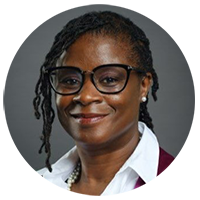Event Overview
Elevating the Role of Women in the Public Sector
Women have made a tremendous impact in the government; advocating for change, influencing policy and law and paving the way for future generations. Despite the continuous efforts made, women remain underrepresented within the public sector landscape. Women are still faced with challenges and barriers that only increase if they are a woman of colour, are part of the LGBTQ2+ community or have disabilities. There is a significant disparity of women in leadership roles within both public and private sectors. This is due to longstanding stereotypes and biases, which impact women from the time they are young girls. Systemic change is required to overcome and shift the perception surrounding women’s leadership.
Statistics show that having women in positions of leadership directly influences and improves the socio-economic landscape for all. It is reported that there is a direct correlation between women leaders in government and the creation and implementation of more inclusive and equitable policies both internally and within our communities.
In this fifth segment of Public Sector Network’s Women in Leadership series 2022, we will explore key factors that continue to hinder or discourage women leaders, and how we can address and overcome them. We will discuss the importance of mentorship programs, allyship and leadership development. We will examine what it takes to make a great leader and how to challenge common barriers. Most importantly, we will highlight the strategies needed to quash what is problematic within our system and what we can all do to pave the road for the next generation of women wanting to pursue a leadership role.

Benefits of Attending
Your Inspiring Speakers

The Honourable Lena Metlege Diab
Member of Parliament
House of Commons Canada

Nosa Ero-Brown
Chief Talent Officer
Ontario Public Service

Tania Tajirian
Chief Medical Information Officer and Chief of Hospital Medicine, CAMH and Assistant Professor, University of Toronto

Ramneet Aujla
Chief Human Resources Officer
Metrolinx

Lisa Smylie
Director General, Research, Results and Delivery and Centre of Expertise
Women and Gender Equality Canada

Wendy Bullion-Winters
Director General and Chief Human Resources Officer
Canada School of Public Service

Ginette Seguin
Chief Petty Officer First Class
Royal Canadian Navy

Josie Scioli
Deputy City Manager,
Corporate Services
City of Toronto

Pam Lovelace
Deputy Mayor
Halifax Regional Municipality

Erica Fleck
Assistant Chief, Emergency Management
Halifax Regional Fire and Emergency

Suzanne Obiorah
Director, Gender and Race Equity, Inclusion, Indigenous Relations and Social Development
City of Ottawa

Candace Thomas
Deputy Minister, Justice and Deputy Attorney General
Government of Nova Scotia

Honourable Melanie Mark
Member of the Legislative Assembly for Vancouver – Mount Pleasant

Maureen Towle
Assistant Deputy Minister, Service Alberta Data, Information and Privacy Services Division
Government of Alberta

Angela Cooke
Assistant Deputy Minister, Housing, Construction Standards, Multiculturalism & Anti-Racism
Ministry of Attorney General and Responsible for Housing, Government of British Columbia

Erin Gobolos
VP, Marketing and Community Relations Edmonton Unlimited

Valerie Gideon
Associate Deputy Minister
Indigenous Services Canada

Lynette Tremblay
Chief Operating Officer
Invest Alberta

Niki Sharma
Member of the Legislative Assembly, Deputy Caucus Chair and Parliamentary Secretary for Community Development and Non-Profits
Province of British Columbia

Lalitha Flach
Chief Operating Officer, Assistant Chief Electoral Officer
Elections Ontario

Jennifer Rice
City Councillor
City of Edmonton

Elise Belzil
Executive Director, Status of Women and Inclusion
Alberta Culture and Status of Women

Dawn Thomas
Vice President, Indigenous Health and Diversity, Equity and Inclusion
Island Health

Kathy Bishop
Associate Professor and Program Head, MA Leadership & GC Values-Based Leadership Leadership Studies
Royal Roads University
Key Sessions
Challenging Bias and Barriers: Envisioning the Future of Women in Leadership
- What factors are currently impacting representation of women leaders in the government?
- What are some key strategies driving change in your organization? What still needs work?
- How can women better identify and address bias and barriers at work?
- What can we do to ameliorate diversity within women leadership?
How to Champion for Change and Become a Better Ally in the Workplace
- As women, how can we help other marginalized groups within our organizations?
- What are some key tips to building a more compassionate, inclusive and understanding culture?
- How can women become mentors, or seek mentorship in the office?
- As a leader, how can we help influence and encourage other leaders to drive change?
Looking Back at What Shaped Us: How Life’s Defining Moments Can Make You Better Leaders
- What or who motivated you to step up and want to become a leader?
- What has been the most significant barrier in your career, and how did you overcome it?
- Through your experiences, what factors make for a good leader, and why?
- What is one moment in your life that helped shape you as a leader, and why?
- What is the most rewarding experience you’ve had as a leader?
How to Encourage Talent Development, Training and Upskilling for Women within Public Sector
- What sort of strategies can leaders implement, at all levels, to promote professional development for all women
- How can women become mentors, or seek mentorship in the office?
- Ensuring that training and development programs are both inclusive and accessible to all
Navigating the Complexities of Being a Leader Today and Where Do We Go from Here
- How has the landscape for women in leadership changed over the past decade and how is this influencing leadership practices today?
- How can we calculate the positive impacts of having women in the organization?
- How can we push for systemic change when faced with adversity?
- How can women leaders advocate for change when they are the minority?
- What are some of the strategies governments can implement to encourage women and gender-diverse leadership?
- How can men play a bigger role in advocating for more inclusivity within the workplace?
Your Registration
What Your Peers Had to Say
Our Event Partners








